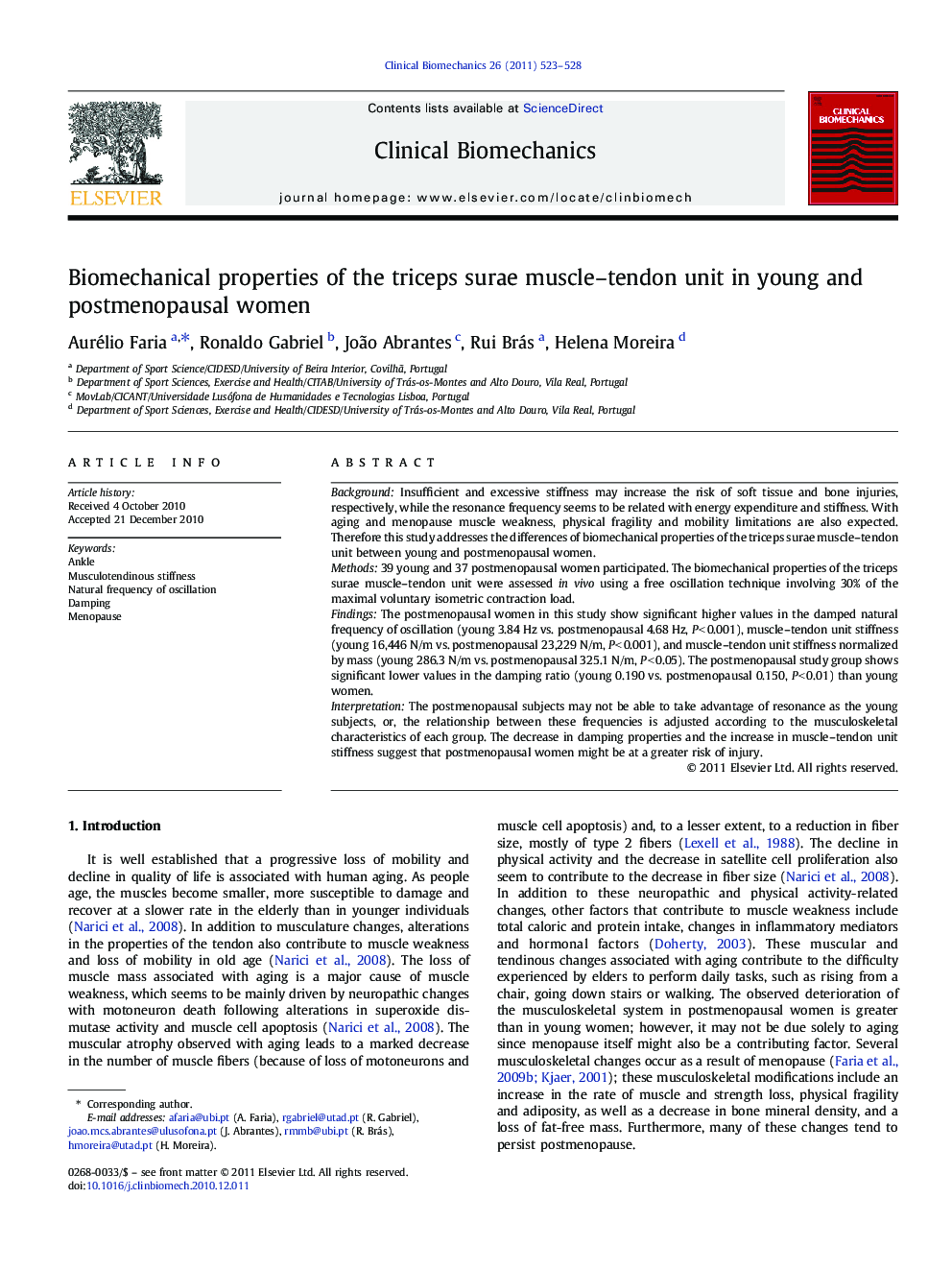| Article ID | Journal | Published Year | Pages | File Type |
|---|---|---|---|---|
| 6205097 | Clinical Biomechanics | 2011 | 6 Pages |
BackgroundInsufficient and excessive stiffness may increase the risk of soft tissue and bone injuries, respectively, while the resonance frequency seems to be related with energy expenditure and stiffness. With aging and menopause muscle weakness, physical fragility and mobility limitations are also expected. Therefore this study addresses the differences of biomechanical properties of the triceps surae muscle-tendon unit between young and postmenopausal women.Methods39 young and 37 postmenopausal women participated. The biomechanical properties of the triceps surae muscle-tendon unit were assessed in vivo using a free oscillation technique involving 30% of the maximal voluntary isometric contraction load.FindingsThe postmenopausal women in this study show significant higher values in the damped natural frequency of oscillation (young 3.84Â Hz vs. postmenopausal 4.68Â Hz, PÂ <Â 0.001), muscle-tendon unit stiffness (young 16,446Â N/m vs. postmenopausal 23,229Â N/m, PÂ <Â 0.001), and muscle-tendon unit stiffness normalized by mass (young 286.3Â N/m vs. postmenopausal 325.1Â N/m, PÂ <Â 0.05). The postmenopausal study group shows significant lower values in the damping ratio (young 0.190 vs. postmenopausal 0.150, PÂ <Â 0.01) than young women.InterpretationThe postmenopausal subjects may not be able to take advantage of resonance as the young subjects, or, the relationship between these frequencies is adjusted according to the musculoskeletal characteristics of each group. The decrease in damping properties and the increase in muscle-tendon unit stiffness suggest that postmenopausal women might be at a greater risk of injury.
